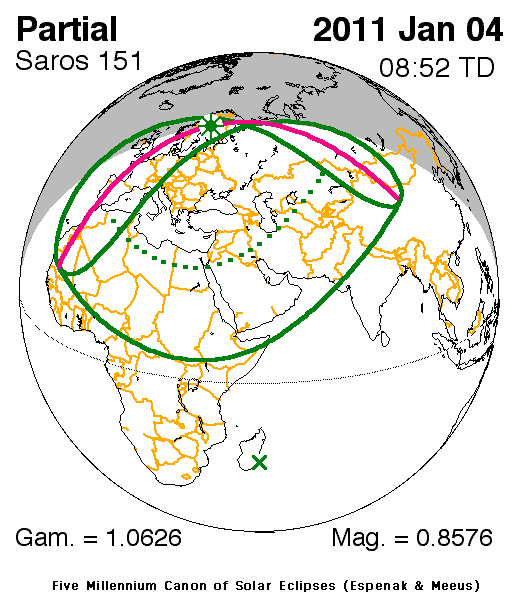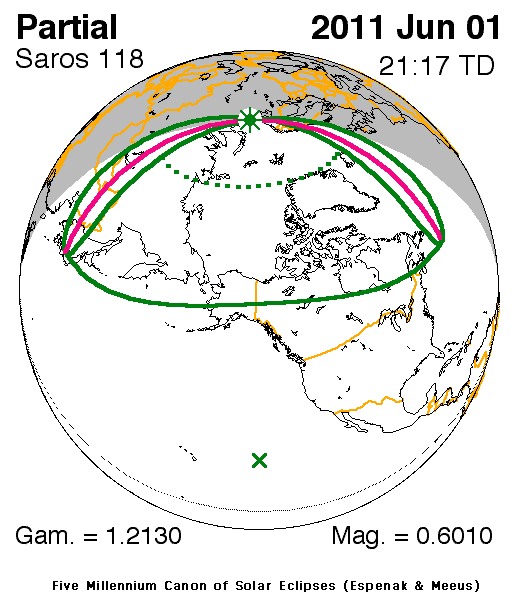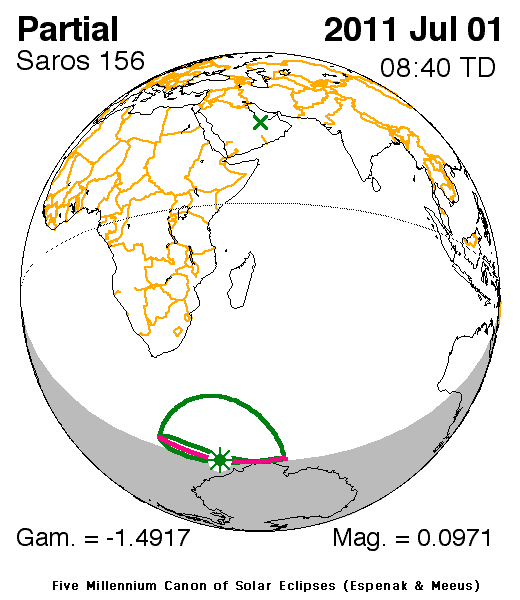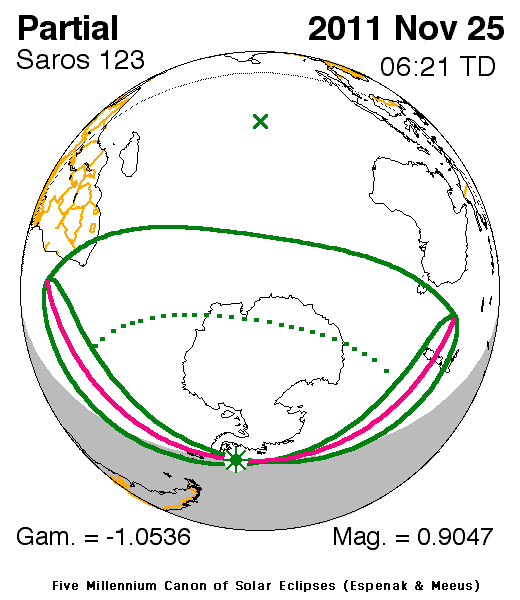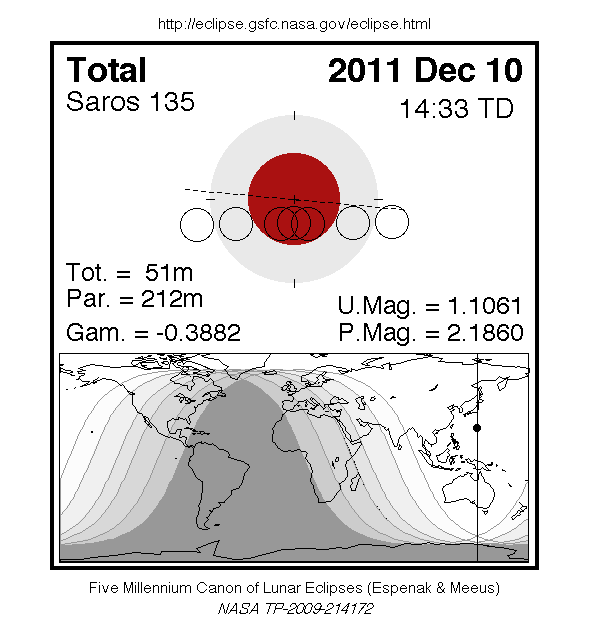Eclipses are enchanting wonders! And on Wednesday, June 1st 2011, a
partial solar eclipse will occur. What is a partial solar eclipse? A partial solar eclipse occurs when the moon (at 'new' moon; i.e. not visible), passes in front of the earth's shadow and blocks part of the light; usually visible in the polar region. Alaska, northern Canada, Greenland, Iceland among others are a few places on our planet which will see this phenomena. This eclipse is the second of four partial solar eclipses in 2011, with the others occurring on
January 4, 2011,
July 1, 2011, and
November 25, 2011. The moon will be busy
June 15, 2011 as well; a total lunar eclipse is predicted.
The point of greatest eclipse occurs in far northwestern Russia, near Cheshskaya Bay at 21:16:11 UT with a magnitude of 0.602. This will occur about two hours after the eclipse begins its path from Siberia. From there, Norway, Iceland (etc) will have a midnight eclipse, because the Sun will be eclipsed at night.
The partial solar eclipse is ‘a solar eclipse in which the Moon's penumbral shadow traverses Earth (umbral and antumbral shadows completely miss Earth). During a partial eclipse, the Moon appears to block part (but not all) of the Sun's disk. From the prospective of an individual observer, a partial eclipse is one in which the observer is within the penumbral shadow but outside the path of the umbral or antumbral shadows,’ as defined in the NASA’s Glossary of Solar Eclipse Terms. More clearly stated, only part of the sun is not visible. You can still see some of it clearly as if it was day. Not much phenomena occur because it’s just a piece of the sun being blocked, but still should never be looked at directly.
The text above is taken from a research paper entitled Astronomical Events: Eclipses, Transits, Occultations, and Conjunctions written by Matthew Winter, reflecting on what a partial solar eclipse is.
Below is the projected eclipse map, including visibility.
Above is a picture
taken from this animation. It shows the projected map of the eclipse. "This image (below) shows the partial solar eclipse’s path on June 1, 2011. The different shades of red depict the eclipse's visibility, with the strongest and innermost shade depicting 75 percent visibility, followed by 50 percent visibility, 25 percent visibility, and down to as low as zero percent visibility."
TimeandDate writes.
A great animation of the eclipse, with small 'suns' next to various locations to see the sun be eclipsed from that location, can
cordially be viewed here. Below is a quick example of what the Sun will look like from Barrow, Alaska at the point of greatest eclipse there. Click on the picture to see it larger...you will have to scroll down the webpage to find it.
If you would like to have fun with Sun (and this eclipse!)
Stellarium can help. I hope everyone will be able to see an eclipse in their lifetime -- watch out! In 2017, America will experience a TOTAL solar eclipse.
I'll be sure to post pictures on
Astronomical's New Page: Eclipses of this eclipse!
http://shadowandsubstance.com/
